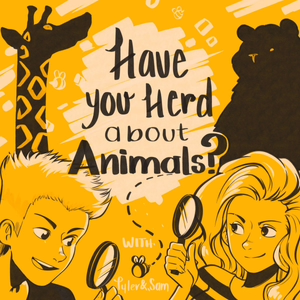
Have You Herd About Animals?
Tyler Inhofe and Sam Solkovits
All episodes
Best episodes
Seasons
Top 10 Have You Herd About Animals? Episodes
Goodpods has curated a list of the 10 best Have You Herd About Animals? episodes, ranked by the number of listens and likes each episode have garnered from our listeners. If you are listening to Have You Herd About Animals? for the first time, there's no better place to start than with one of these standout episodes. If you are a fan of the show, vote for your favorite Have You Herd About Animals? episode by adding your comments to the episode page.
FAQ
How many episodes does Have You Herd About Animals? have?
Have You Herd About Animals? currently has 94 episodes available.
What topics does Have You Herd About Animals? cover?
The podcast is about Animals, Kid Friendly, Happy, Fun, Earth Sciences, Comedy, Nature, Podcasts, Education and Science.
What is the most popular episode on Have You Herd About Animals??
The episode title 'Have You Herd About Ghost Sharks? (Chimaera)' is the most popular.
What is the average episode length on Have You Herd About Animals??
The average episode length on Have You Herd About Animals? is 13 minutes.
How often are episodes of Have You Herd About Animals? released?
Episodes of Have You Herd About Animals? are typically released every 7 days.
When was the first episode of Have You Herd About Animals??
The first episode of Have You Herd About Animals? was released on Jan 9, 2022.
Show more FAQ

Show more FAQ